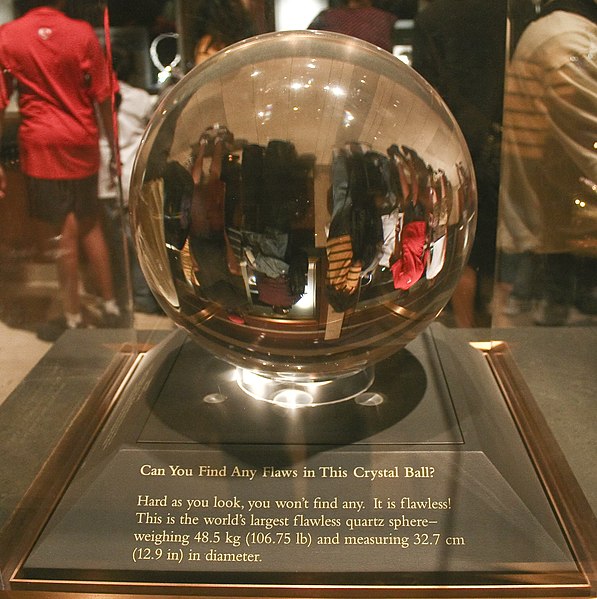A palantír is one of several indestructible crystal balls from J. R. R. Tolkien's epic-fantasy novel The Lord of the Rings. The word comes from Quenya palan 'far', and tir 'watch over'. The palantírs were used for communication and to see events in other parts of Arda, or in the past.
Tom Shippey suggests that the palantírs' deception says one should trust in providence, not crystal balls. Painting by J.W. Waterhouse, 1902
Joseph Pearce compared Sauron's use of Palantírs to spread despair to wartime use of radio for propaganda. Screenshot from Frank Capra's wartime Why We Fight
In Peter Jackson's The Two Towers, Saruman uses the Orthanc Palantír, the camera giving an overview as shown, and then zooming in, like a Palantír itself, providing the viewer with an omniscient picture of the whole of Middle-earth.
A crystal ball is a crystal or glass ball commonly used in fortune-telling. It is generally associated with the performance of clairvoyance and scrying in particular. Other names include crystal sphere, gazing ball, shew stone, and show stone. In neopaganism it is sometimes called an orbuculum.
The Crystal Ball by John William Waterhouse (1902)
A quartz crystal ball of the type commonly used for divination or scrying
The largest flawless quartz sphere is in the National Museum of Natural History, Washington D.C.





